Valco Baby makes one of the best double all-terrain strollers on the market right now, the Tri-mode Twin EX. When I, Susie, learned they were coming out with the Snap Ultra, a lightweight reversible stroller, I knew I was going to be draining the bank account again for a chance to see one up close. I hopped over to Amazon, did the super-shipper saving thing, and a week later, it arrived in a big, big box. Let’s see if it was worth it.
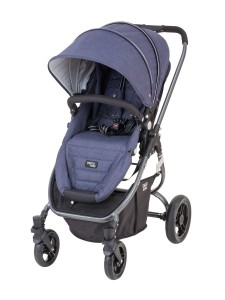 To give you a bird’s eye view of things, let’s start with what kind of stroller we’re talking about. The 2015 Valco Baby Snap Ultra is an exceptionally light, compact, and reversible single stroller. It only weighs 19 pounds but comes with wheels large enough to handle a range of terrain. You can even buy dedicated all-terrain tires and pop them on the Snap Ultra, turning it into a practical all-terrain stroller that’s comfortable just about anywhere.
To give you a bird’s eye view of things, let’s start with what kind of stroller we’re talking about. The 2015 Valco Baby Snap Ultra is an exceptionally light, compact, and reversible single stroller. It only weighs 19 pounds but comes with wheels large enough to handle a range of terrain. You can even buy dedicated all-terrain tires and pop them on the Snap Ultra, turning it into a practical all-terrain stroller that’s comfortable just about anywhere.
As a compact luxury stroller, the it competes with other high-end single seat reversible strollers like the Stokke Scoot Stroller V2, Mamas & Papas Armadillo Flip, Mamas & Papas Urbo2, UPPAbaby Cruz, and UPPAbaby Vista.
Something else I like about the Snap Ultra is that you can add an optional bassinet to it, turning it into a pram. I’m mad about prams, and there aren’t many strollers that let you use them. I also like how much room there is to fit taller toddlers and even preschoolers, and how you can also use the stroller with newborns even without adding an infant seat or a bassinet, simply because the main seat has a deep, almost flat recline. The usual goodies are also present, including an adjustable leg rest, and 5-point harness, a nice big canopy, and a good-sized basket.
Overall, I’d give the Snap Ultra 5 out of 5 stars. If you’re in the market for a compact, incredibly lightweight, luxury reversible stroller with a bassinet option, this is one you should consider. I’m tickled pink at the fact that the wheels can be switched after already being decent-sized to begin with, and that it still comes in at 19 pounds.
The main downsides to the Snap Ultra, in my opinion, include the lack of an adjustable handle bar, peekaboo window, and suspension system. I imagine Valco Baby cut these out in order to save weight, so it might not be feasible to have all three without fundamentally changing the stroller. We’ll see.
The best price I’ve found so far for the 2015 Valco Baby Snap Ultra is here on Amazon, which includes free shipping, free returns, and no sales tax, depending on your state.
Buy the 2015 Valco Baby Snap Ultra lightweight stroller on Sale at Amazon.
Pros of the 2015 Valco Baby Snap Ultra
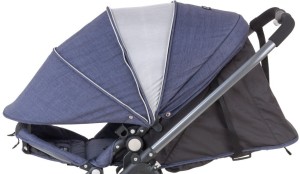 Big, bold canopy. The canopy is one of the most noticeable features of the Snap Ultra. It’s large and in charge, extending from the handle bars down past the bumper bar in order to give your child wall to wall coverage. There are only a handful of canopies even close to this size in this price range, so I’m very happy with it. There’s a big zipped mesh panel that serves as both a window for air circulation and also as a peekaboo window to give you a view of your child.
Big, bold canopy. The canopy is one of the most noticeable features of the Snap Ultra. It’s large and in charge, extending from the handle bars down past the bumper bar in order to give your child wall to wall coverage. There are only a handful of canopies even close to this size in this price range, so I’m very happy with it. There’s a big zipped mesh panel that serves as both a window for air circulation and also as a peekaboo window to give you a view of your child.
 Padded handle bar with runaway strap. Unlike most strollers in this price range, the Snap Ultra strangely comes with a handle bar that’s not adjustable. However, it’s located at a sufficiently balanced height (41″) that both taller and shorter parents are likely to be able to use it without issue. For comparison, most adjustable handle bars range between around 39″ and 43″, placing the Snap Ultra’s handle bar conveniently in the middle range. It’s padded and has a center grip to aid in one-handed steering, although I’m always a fan of using two hands for extra control. On the right side of the bar is a runaway strap that you can loop around your wrist to reduce the odds of having your stroller get away from you unexpectedly.
Padded handle bar with runaway strap. Unlike most strollers in this price range, the Snap Ultra strangely comes with a handle bar that’s not adjustable. However, it’s located at a sufficiently balanced height (41″) that both taller and shorter parents are likely to be able to use it without issue. For comparison, most adjustable handle bars range between around 39″ and 43″, placing the Snap Ultra’s handle bar conveniently in the middle range. It’s padded and has a center grip to aid in one-handed steering, although I’m always a fan of using two hands for extra control. On the right side of the bar is a runaway strap that you can loop around your wrist to reduce the odds of having your stroller get away from you unexpectedly.
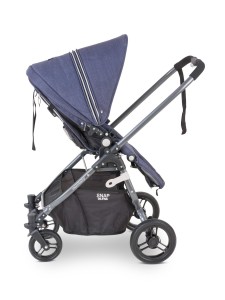 Reversible seat with 5-point harness and adjustable leg rest. I love reversible seats in strollers, as I like being able to see my kids while we’re out and about–especially during the first 6 months before they can sit up independently. The seat is wonderfully sized for taller children at 12.5″ wide, 20″ deep, and 25″ tall from seat bottom to canopy height. The canopy height is one of the tallest you’ll find in a stroller these days, which makes it an excellent option if your child is one of those 80 or 90% children on the growth charts.
Reversible seat with 5-point harness and adjustable leg rest. I love reversible seats in strollers, as I like being able to see my kids while we’re out and about–especially during the first 6 months before they can sit up independently. The seat is wonderfully sized for taller children at 12.5″ wide, 20″ deep, and 25″ tall from seat bottom to canopy height. The canopy height is one of the tallest you’ll find in a stroller these days, which makes it an excellent option if your child is one of those 80 or 90% children on the growth charts.
The 5-point harness included with the Snap Ultra is, as is the case with most high-end strollers, adjustable, padded, and features a center release-style buckle. The adjustable leg rest feels sturdy and is a fan of children everywhere. You can use the seat from birth with a child due to the deep, nearly flat recline that works well for newborns. You can recline the seat with a single hand but it takes two to raise it. The upper weight limit is 45 pounds. The recline function and levels operate equally well in forward-facing or parent-facing modes and you can fold the Snap Ultra in either seating position. A padded, removable bumper bar is also included.
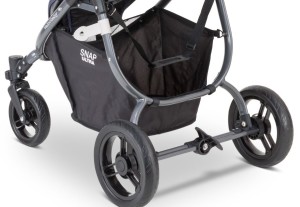 Great big basket and storage pockets. There are a pair of storage pockets behind the seat that are great for small things like keys, wallets, smart phones, and sunglasses. However, the real star of the show is the wonderfully huge and deep basket beneath the seat. I was able to fit a large diaper bag, multiple gallons of milk, and a few fruits and vegetables there from a quick store run the other day. The basket is also accessible from every side, including from the front if you raise the leg rest. I honestly find it to be one of the most impressive baskets in the compact luxury segment.
Great big basket and storage pockets. There are a pair of storage pockets behind the seat that are great for small things like keys, wallets, smart phones, and sunglasses. However, the real star of the show is the wonderfully huge and deep basket beneath the seat. I was able to fit a large diaper bag, multiple gallons of milk, and a few fruits and vegetables there from a quick store run the other day. The basket is also accessible from every side, including from the front if you raise the leg rest. I honestly find it to be one of the most impressive baskets in the compact luxury segment.
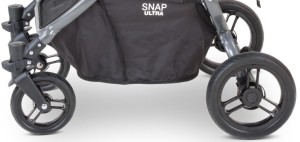 Larger tires than the competition with all-terrain tire option. Each tire is made of a durable rubber. The front tires are 8″ in diameter while the rear tires are 10.” You can swivel or lock the front tires. These aren’t all-terrain tires, but they’re definitely big and tough enough to be used on grass, dirt, mud, or even the crazy sidewalks of Chicago. They’re also larger than many other tires you’ll see in the compact luxury segment. Here’s a quick comparison to the last several reversible-seat strollers I’ve reviewed:
Larger tires than the competition with all-terrain tire option. Each tire is made of a durable rubber. The front tires are 8″ in diameter while the rear tires are 10.” You can swivel or lock the front tires. These aren’t all-terrain tires, but they’re definitely big and tough enough to be used on grass, dirt, mud, or even the crazy sidewalks of Chicago. They’re also larger than many other tires you’ll see in the compact luxury segment. Here’s a quick comparison to the last several reversible-seat strollers I’ve reviewed:
Mamas & Papas Urbo2 – 6″ and 7.”
Mamas & Papas Armadillo Flip – 6″ and 7.5.”
Stokke Scoot V2 – 8″ and 10.”
UPPAbaby CRUZ – 6.5″ and 8.25.”
UPPAbaby Vista – 6.5″ and 8.25.”
The jury is in; the Valco Baby Snap Ultra has some of the largest wheels you’re going to find in a stroller this size, and they’re definitely the largest you’ll find in a premium stroller that comes in at under 20 pounds.
However, if the tires aren’t big or rough enough for the trails you plan on hitting, Valco Baby’s got you covered. The truly outdoorsy will want to pick up a set of dedicated all-terrain tires that are air-filled and ready for just about anything. They can be switched with the standard tires in a few seconds and then you’ll have yourself a fully capable all-terrain stroller. Very cool. You can pick them up here on Amazon.
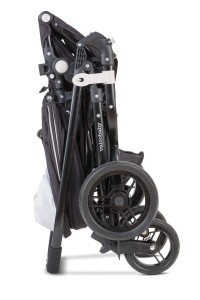 Compact fold and included rain cover. You’ll need both hands to make the fold work, but once you’ve got the hang of it, it’s impressive. You can fold up the Snap Ultra with the seat in either a forward-facing or parent-facing configuration. The stroller locks automatically and can stand on its own. When folded, it’s 11.5″ high, 20.5″ wide, and 33″ long.
Compact fold and included rain cover. You’ll need both hands to make the fold work, but once you’ve got the hang of it, it’s impressive. You can fold up the Snap Ultra with the seat in either a forward-facing or parent-facing configuration. The stroller locks automatically and can stand on its own. When folded, it’s 11.5″ high, 20.5″ wide, and 33″ long.
A nice goodie you get with the Snap Ultra is an included rain cover. I find rain covers useful for adding a bit of warmth as well on cold days, although I didn’t test mine since May isn’t exactly a cold month when you’re in the Midwest.
Optional bassinet and travel system. It’s no secret that I’m a fan of strollers that include bassinet options; it’s one of the reasons why the Bumbleride Indie is my favorite single stroller and the Indie Twin is my favorite double stroller.
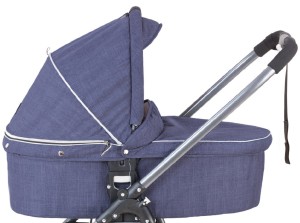 Now, unless you buy a stroller like the Indie 4, you’re not going to get a bassinet included with the stroller itself, but many high-end luxury strollers are including the option to buy them, and the Snap Ultra is one of those strollers. I love bassinets because they let you lay your baby perfectly flat, without exception, without compromises, and a flat position’s the best position for a baby that’s not in your arms. The optional bassinet for the Snap Ultra has a nice soft mattress, a snug and cozy boot cover, and a panel in the canopy to allow for additional airflow. You can pick it up with free shipping and returns from Amazon here.
Now, unless you buy a stroller like the Indie 4, you’re not going to get a bassinet included with the stroller itself, but many high-end luxury strollers are including the option to buy them, and the Snap Ultra is one of those strollers. I love bassinets because they let you lay your baby perfectly flat, without exception, without compromises, and a flat position’s the best position for a baby that’s not in your arms. The optional bassinet for the Snap Ultra has a nice soft mattress, a snug and cozy boot cover, and a panel in the canopy to allow for additional airflow. You can pick it up with free shipping and returns from Amazon here.
If you want to go the more traditional route, you can hook up a range of infant car seats (most of which Mike has reviewed here) to the Snap Ultra to make a travel system. A few examples of seats that will work with the optional car seat adapter include the Chicco KeyFit 30, Maxi-Cosi Mico Max 30, Peg Perego Primo Viaggio 4-35, Cybex Aton 2, and Britax B-Safe 35.
Buy the 2015 Valco Baby Snap Ultra lightweight stroller on Sale at Amazon.
Cons of the 2015 Valco Baby Snap Ultra.
Fixed handle bar. The lack of an adjustable handle bar is an odd feature to leave out in a stroller. I’m not sure why it was done except to potentially shave off a bit of weight. That said, the height works well for a range of parents, although it’s not quite as convenient as an adjustable bar.
Lack of suspension. This is an issue I didn’t notice at first due to the large tires that ship with the Snap Ultra. However, if you frequently use the stroller in parks and trails, you might find yourself with sore hands unless you’re willing to invest in the all-terrain tires. It didn’t bother me, but it might bother you.
Specifications of and Warranty for the 2015 Valco Baby Snap Ultra.
The Snap Ultra weighs a deliciously light 19 pounds and can be used from birth until 45 pounds. The handle bar is fixed at 41″ and the seat is 25″ tall. The front / rear tire dimensions are 8″ and 10″ respectively. The stroller is 30″ long and 20.5″ wide overall.
Valco Baby offers an original owner 1 year warranty. The clock starts ticking on the day the stroller is purchased. You can read more about the warranty here.
Where to Buy the 2015 Valco Baby Snap Ultra.
Whenever possible, I buy my strollers, car seats, and other baby goodies on Amazon, since their prices tend to be the lowest I come across. They also sweeten the pot with free shipping and free returns, and you typically don’t pay sales tax with them unless you’re in a state that charges it.
When it comes to high-end single seat reversible strollers go, the Valco Baby Snap Ultra has plenty to offer in a field that includes solid alternatives like the Mamas & Papas Urbo2, Mamas & Papas Armadillo Flip, Stokke Scoot V2, UPPAbaby Cruz, and UPPAbaby Vista. The impressively-large tires, class-leading light weight frame, and attractive bassinet option make it a stroller well worth considering for urban or suburban parents.
You can buy the Snap Ultra here in Blue Denim (the color I reviewed), Black Night, Grey Marie, and Mulberry Wine. You can buy the bassinet here. You can buy the multi-infant seat adapter here. Canadians can buy the Snap in a range of colors here.
—
If you find the information on car safety, recommended car seats, and car seat reviews on this car seat blog helpful, you can shop through this Amazon link for any purchases, car seat-related or not. Canadians can shop through this link for Canadian purchases.

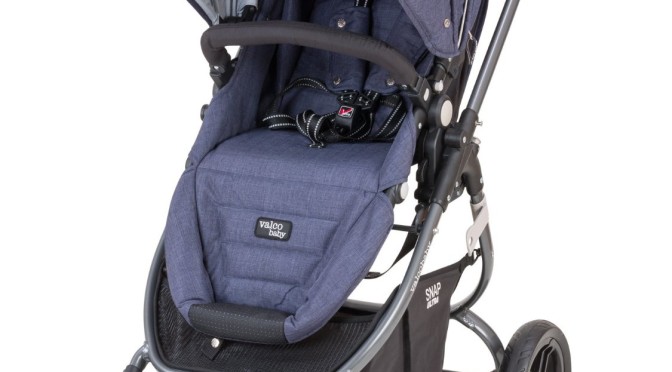

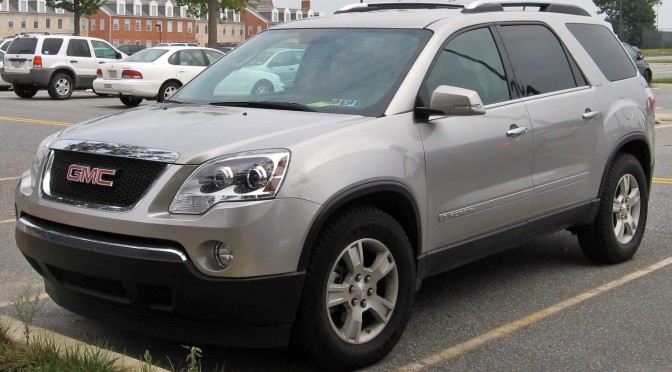
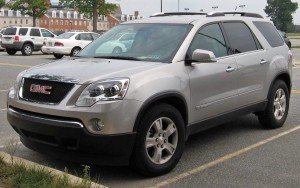 2007, 2008, 2009, 2010, 2011, 2012, 2013, 2014, 2015, 2016 GMC Acadia
2007, 2008, 2009, 2010, 2011, 2012, 2013, 2014, 2015, 2016 GMC Acadia
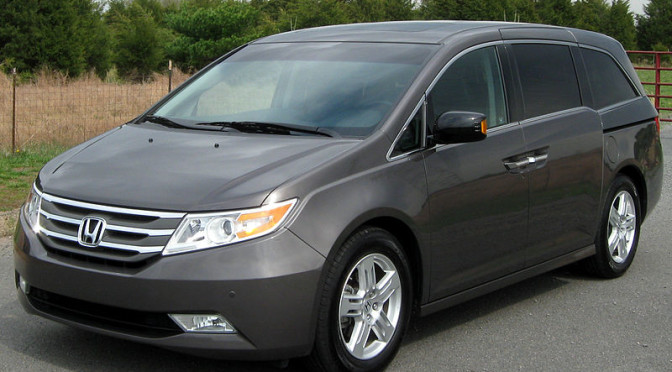
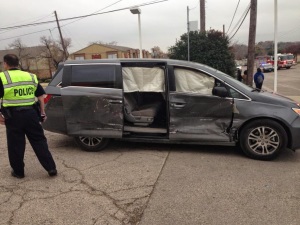

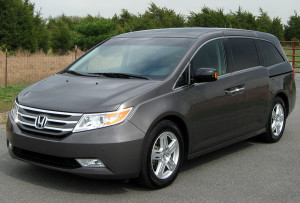 18.5 cm –
18.5 cm – 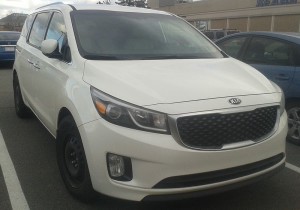 14.5 cm –
14.5 cm – 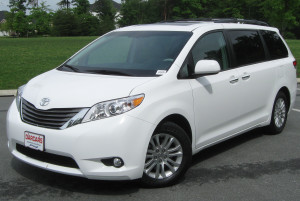 14-15.5 cm –
14-15.5 cm – 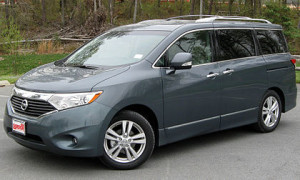 10 cm –
10 cm – 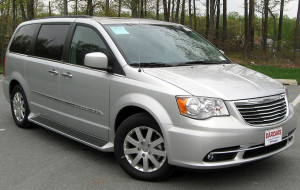 8-10.5 cm –
8-10.5 cm – 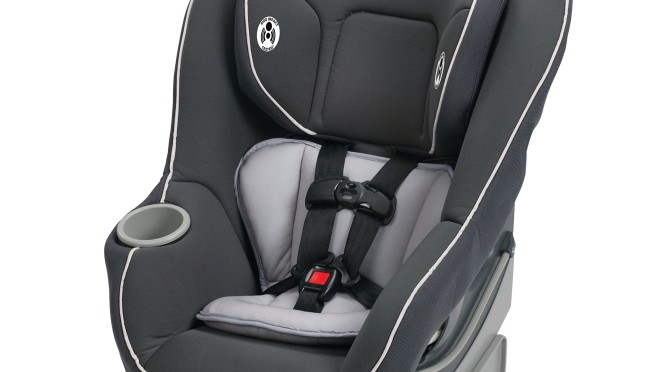
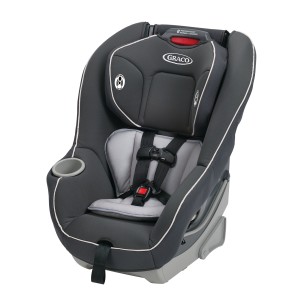
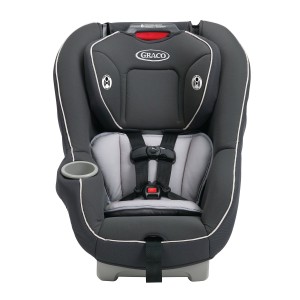
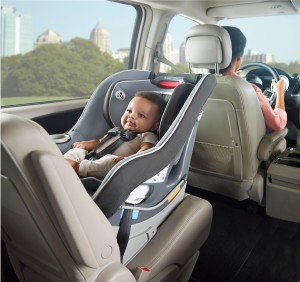
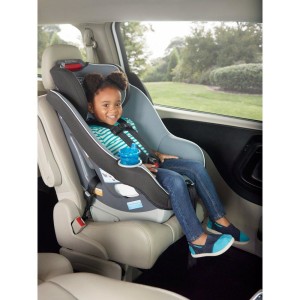
 If you find my information on best practices in car and car seat safety helpful, you can
If you find my information on best practices in car and car seat safety helpful, you can 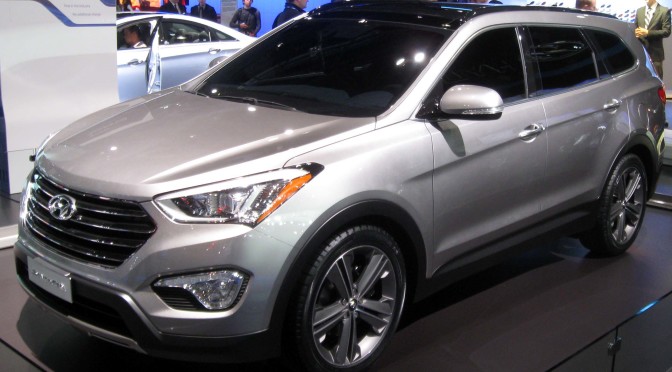
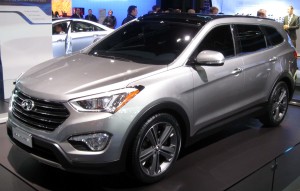 2013, 2014, 2015, 2016 Hyundai Santa Fe (DM)
2013, 2014, 2015, 2016 Hyundai Santa Fe (DM)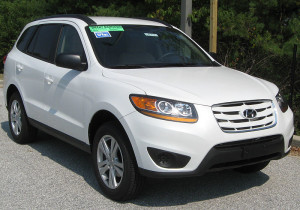 2007, 2008, 2009, 2010, 2011, 2012 Hyundai Santa Fe
2007, 2008, 2009, 2010, 2011, 2012 Hyundai Santa Fe